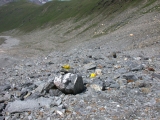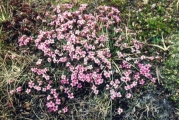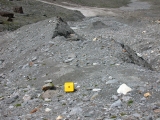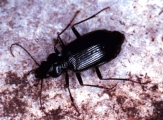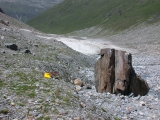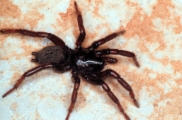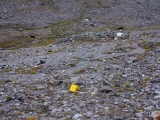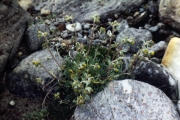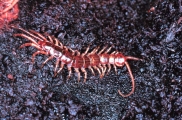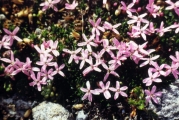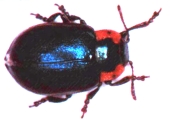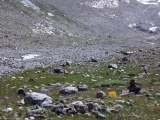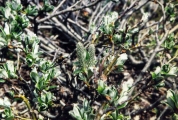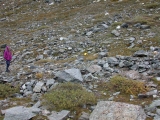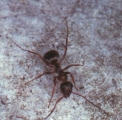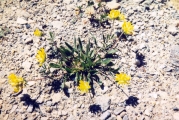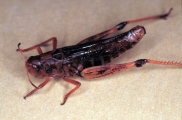After the retreat of the glaciers at the end of the Pleistocene (10,000 years ago) a long succession established the present fauna community and with it the food webs of the alpine ecosystem. A model example to study primary succession after deglaciation is the glacier forefield of the Rotmoos glacier in the Tyrolean Central Alps. The development of soil macrofauna and mesofauna in the successional chronosequence (5-145 ice-free years) of the glacier forefield is shown here.
Soil formation under alpine conditions on the Rotmoos glacier forefield was rather slow and it took 80 years to form an A horizon. The first colonisers of the pioneer site were predators from the orders of harvestmen (Opiliones), spiders (Araneae) and the familiy of ground beetles (Carabidae). Their food source may be based on windblown animals. Below ground, centipedes (Chilopoda) and the larvae of zoophagous fly families (Brachycera, Diptera) appeared as food chains developed. Predator pressure in soils may be high, but it is not limiting for saprophytophagues. In the on-going process, butterfly larvae (Lepidoptera), as the initial humus formers, and the first herbivore beetles follow after about 50 years of succession. At later successional stages millipedes (Diplopoda), snails (Gastropoda) and, as soil formation advances, also earthworms (Lumbricida) add to the herbivore and decomposer guild of arthropods. Ecosystem engineers such as ants (Hymenoptera) and grasshoppers (Saltatoria) only occur at mature stages of succession. |
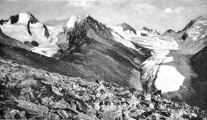 a a
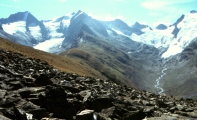 b b
1a and b - Rotmoos glacier (a: 1895; b: 1999). Photo: R. Kaufmann (135K and 115K)
|



